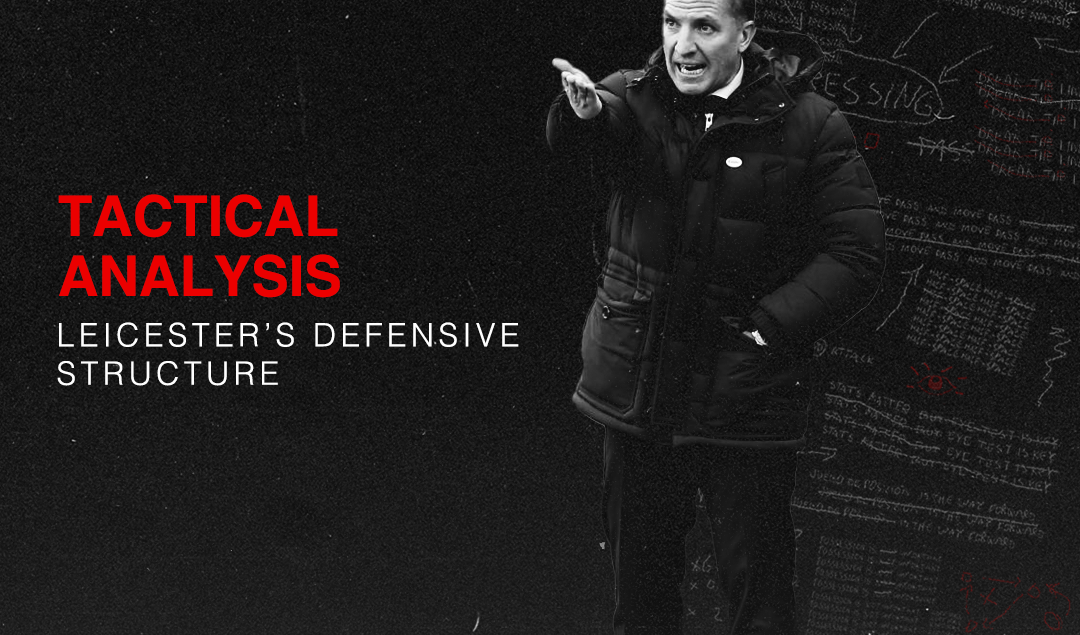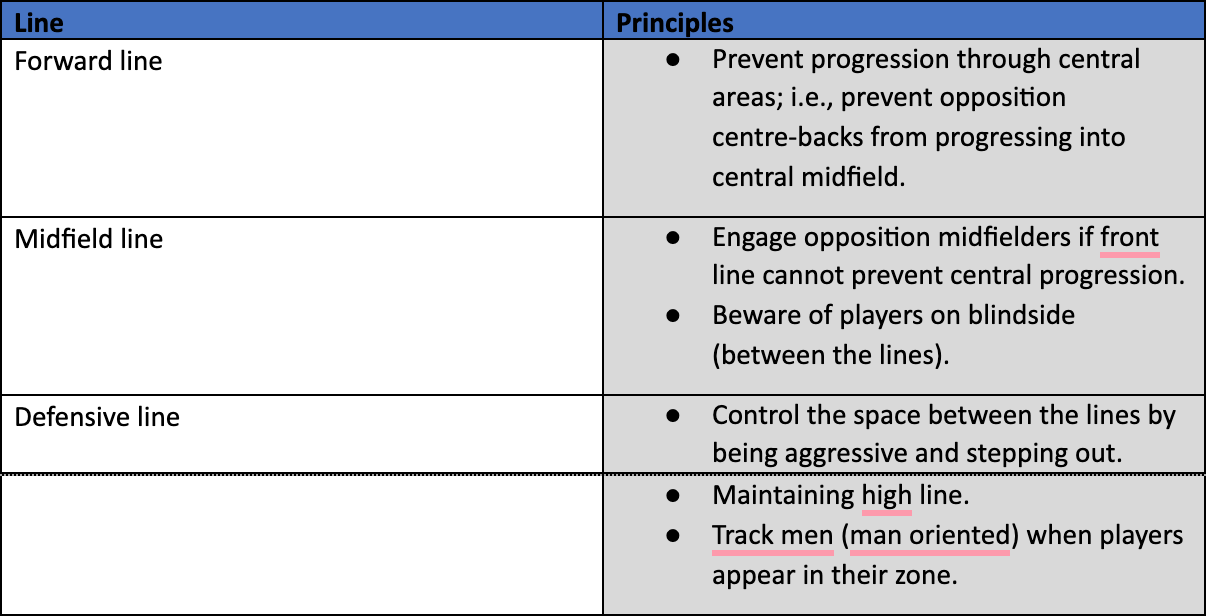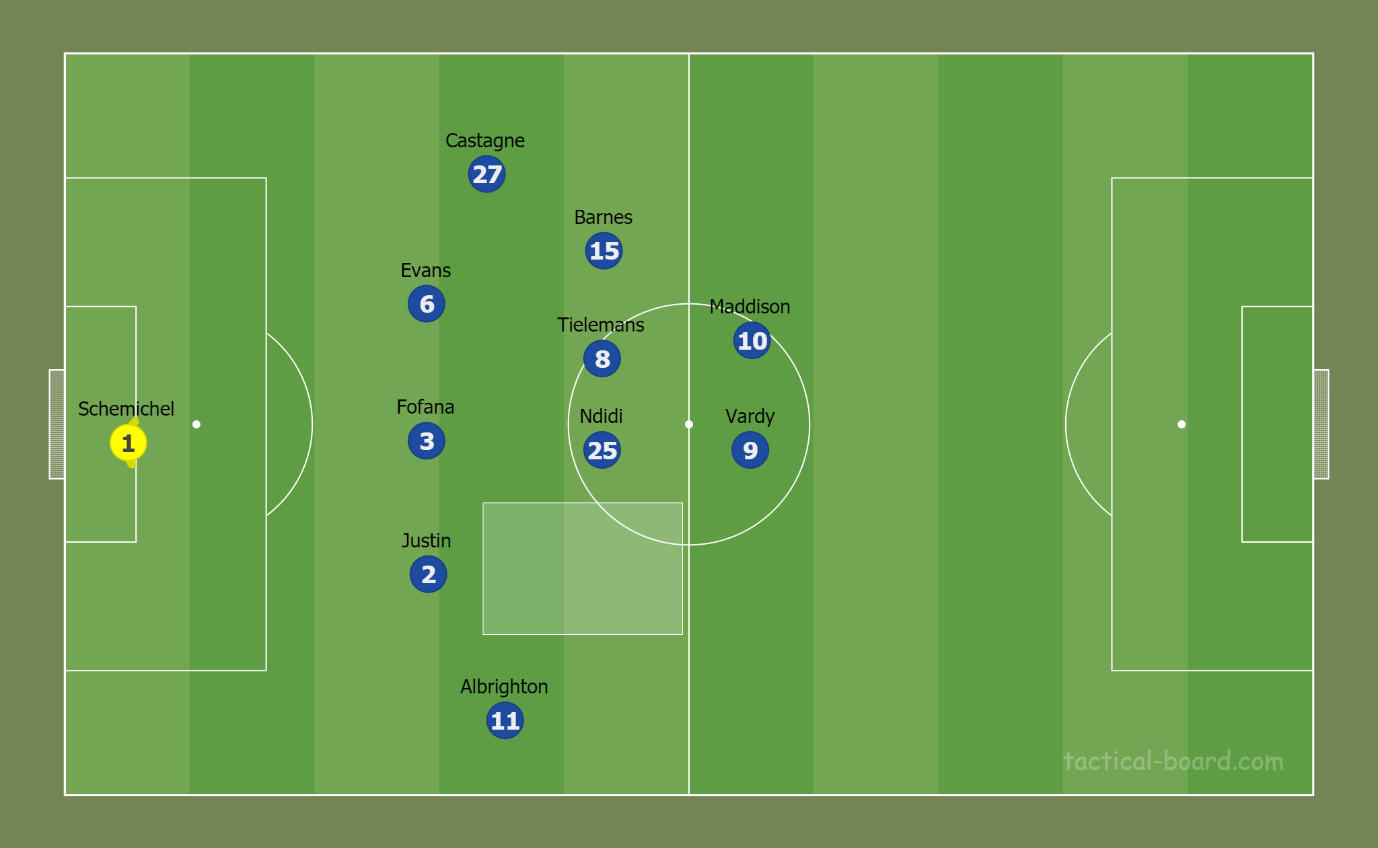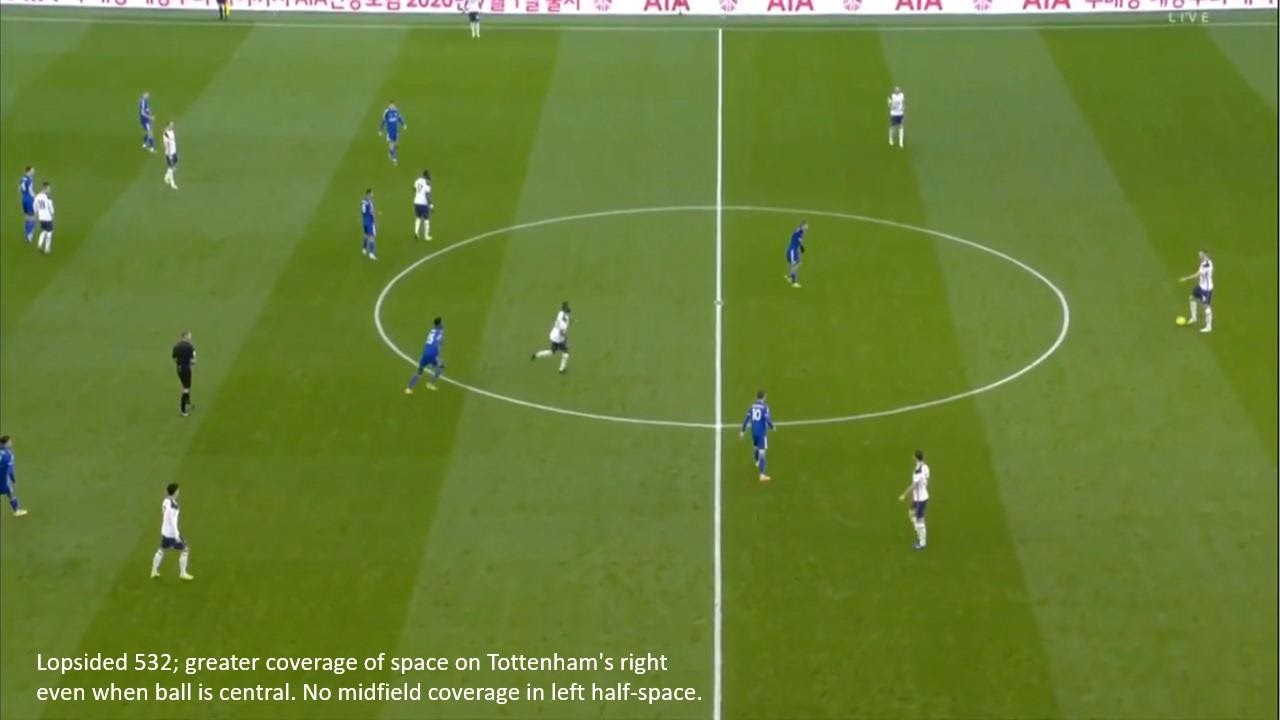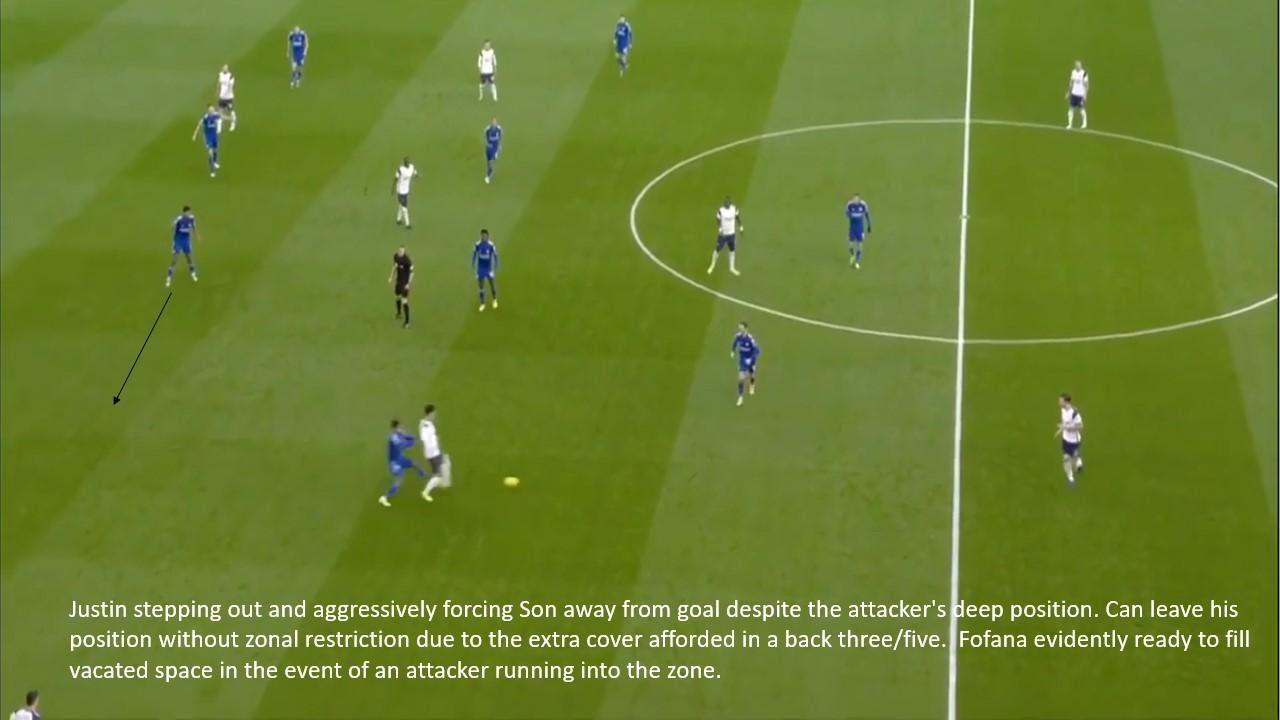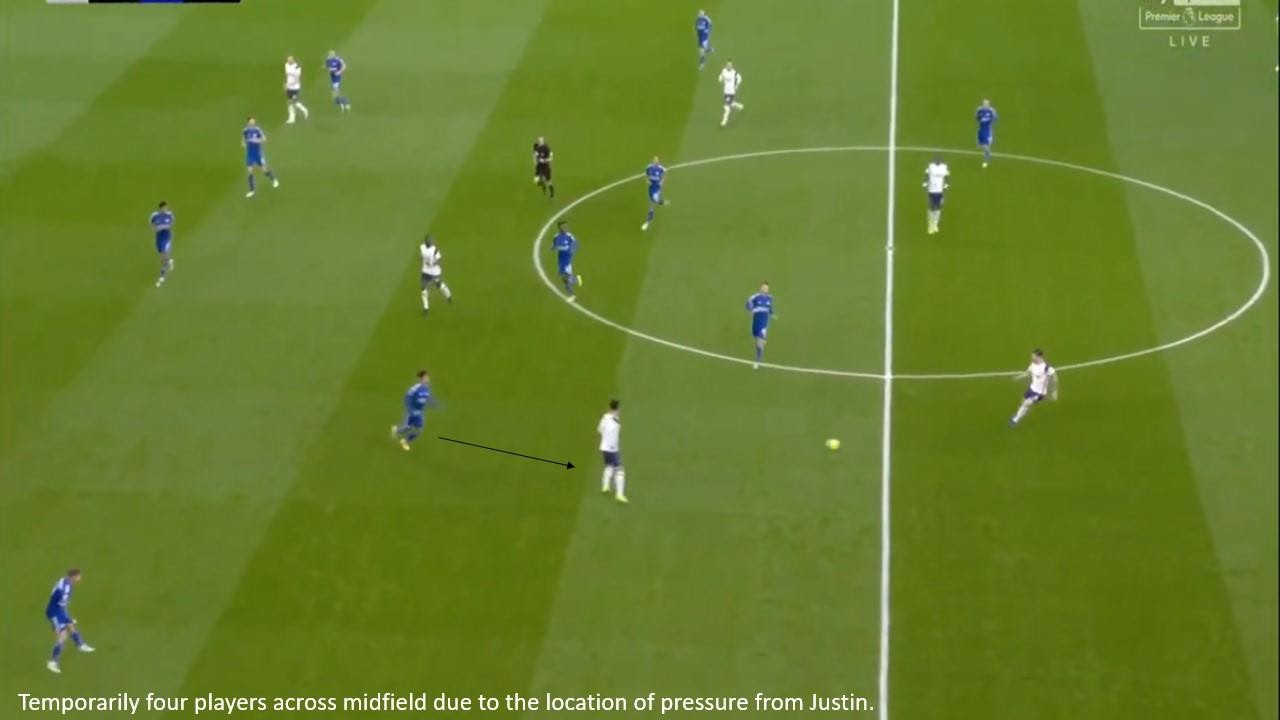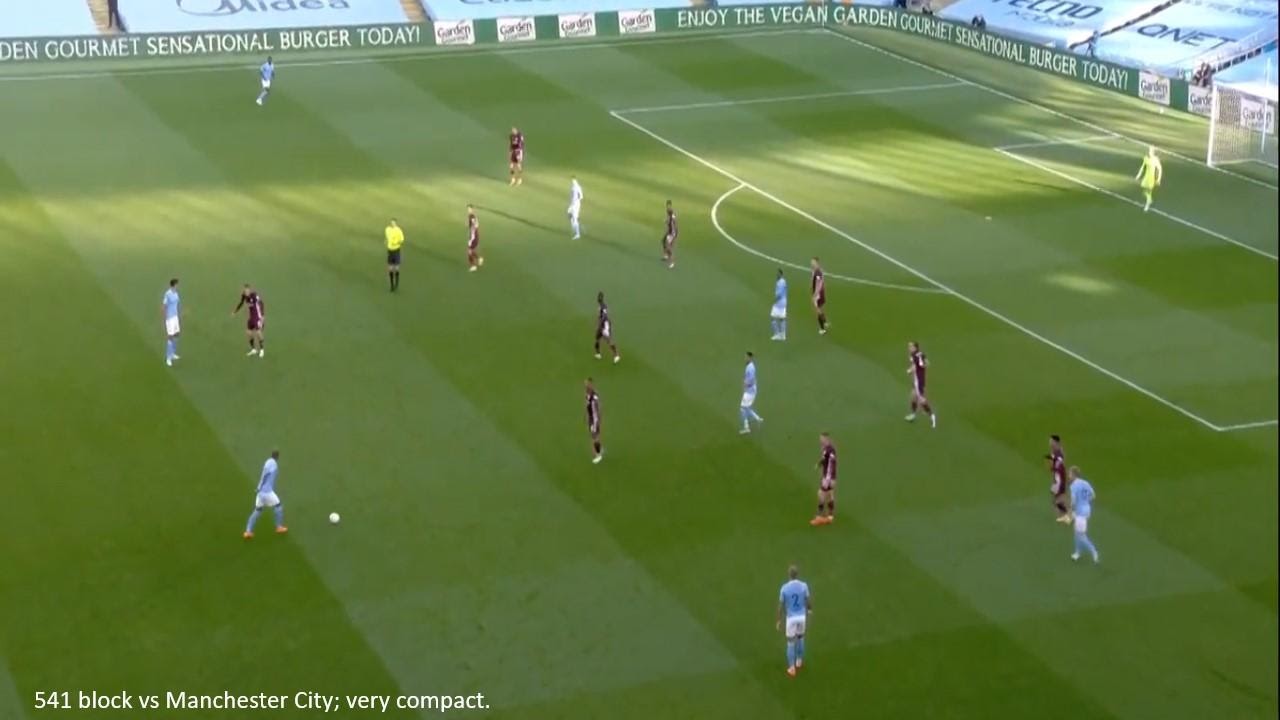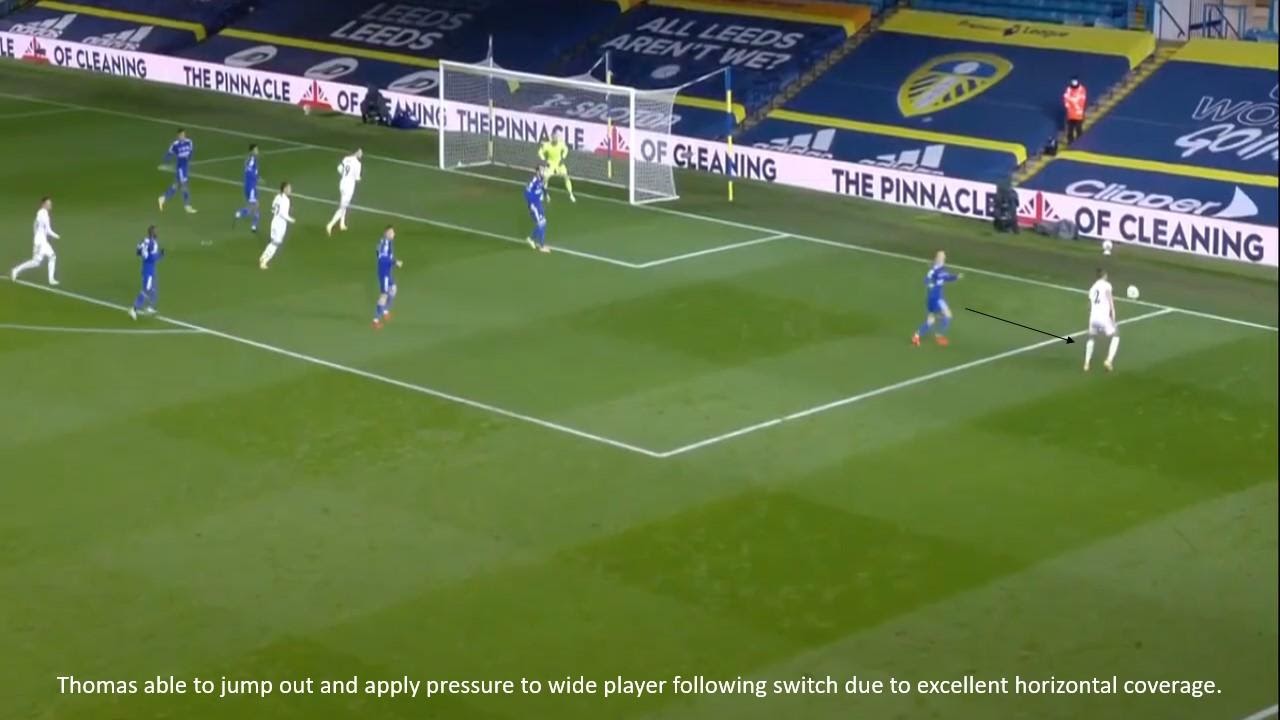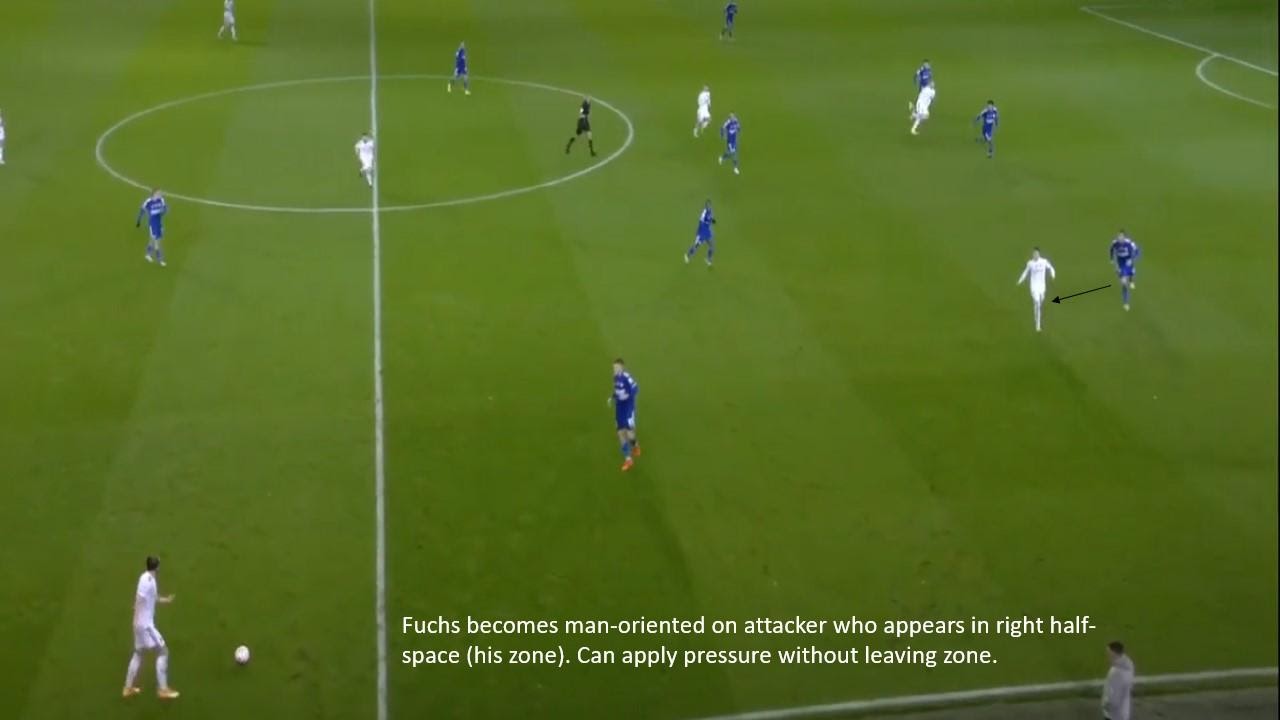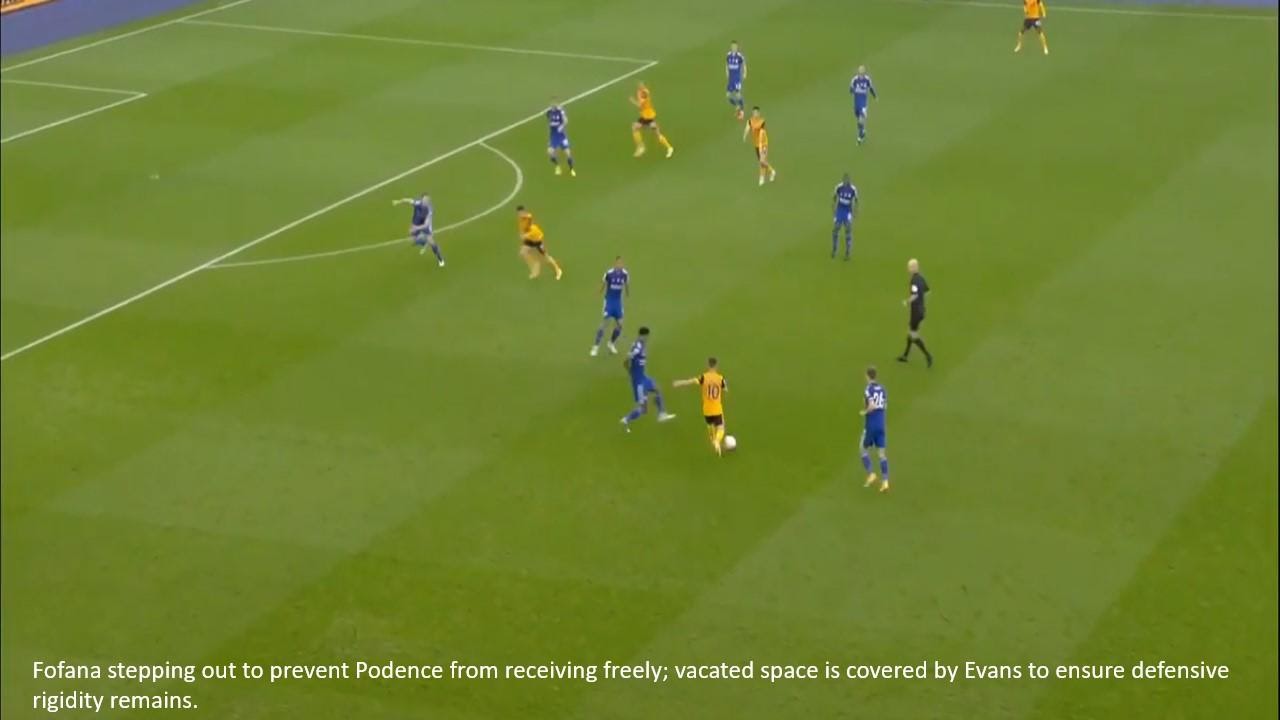Analyzing Leicester City’s Defensive Strategy Under Brendan Rodgers
Tactical flexibility is vital in football. Being flexible as a team, whether this is through different personnel in different positions or team shape in and out of possession, allows you to be largely unpredictable and therefore adds great variety to football. It essentially makes you more difficult to defend against in the sense that it increases the number of solutions the opponent has to find in order to prevent you from being successful in the match.
Flexibility largely ties in with adaptability, in the sense that they counteract each other. If you are flexible as a team, this could be used to your advantage in order to counteract the opponent’s adaptability to the way you play. For example, if the opponent had found a solution to prevent your build-up play from being successful, you may be able to apply flexibility and create a solution by using a forward in a deeper position in order to play out and keep possession.
On the other hand, adapting accordingly to how the opponent plays can counteract their flexibility, as you may be able to prepare different ways to prevent them from carrying out multiple aspects of their game plan. A prime example of this was Pep Guardiola’s final match in charge of Bayern Munich. According to many reports, Guardiola prepared three alternative plans in the build-up to the game in order to defend Borussia Dortmund’s flexible shape. The shape was essentially dependent on the shape of the opposition, which underlines how adapting to the opponent is a necessity in football.
The increase in both quantity and quality of football analysis at the elite level in recent years allows teams to be more prepared for how an opponent may play in a match, and therefore also how they might counteract this in order to win. In essence, it allows you to understand and prepare for what an opponent may throw at you during a match which in turn allows you to prepare ways to exploit or defend this.
Adaptability is a skill; being able to adapt and tweak your team’s shape or a certain individual’s role in accordance with how the opposition play, without your performances decreasing in quality is impressive because it indicates a high level of coaching. Being able to drill your team effectively in order to stop the opposition is a great skill.
Both flexibility and adaptability have been manifested greatly by Brendan Rodgers at Leicester City thus far in the 2020/21 season. As aforementioned was how flexibility and adaptability can counteract each other, however, when used together in combination, the impact can be greater. Utilising these together can ensure you have successfully adapted to the opponent in order to prevent them from performing successfully, whilst having the flexibility to then exploit them in order to win.
Arguably Rodgers’ standout skill is adaptability; he can adapt his side to the opponent effectively without weakening the performances. This article will therefore focus on how Rodgers’ tactical flexibility and adaptability are manifested through Leicester defensively.
Pressing
Thus far this season, the amount of players Leicester press with, and their individual roles in pressing is largely dependent on the setup of the opposition. Players’ roles have varied greatly depending on the build-up structure of the opposition. However, despite this flexible approach, one aspect of the pressing that has remained constant is their man-oriented approach.
There are different ways that man-oriented pressing can be manifested in football. This is largely dependent on what the team perceives as the greatest factor in opting where to press: the man, the zone, or a combination of the two.
In terms of the man, this would consist of pressing which is entirely dependent on the positioning of the opposition player when they receive possession, whereas pressing a zone consists of each player defending a specific zone within a system in order to cover space. The player would engage an opposition player when they entered their designated zone.
It is evident that Leicester view the man as the greatest factor when deciding where to press, however, they do use a combination of both due to the obvious zonal restrictions which come with man-oriented pressing. In comparison, these restrictions are not apparent in a classic man to man marking approach, which has been present at Leeds United this season.
Despite being able to apply aggressive pressure all over the pitch, they are susceptible to being dragged out of position in order to open up dangerous space, which underlines the importance of using a combination of these two factors. Using a combination of both is advantageous because it creates a nice balance between being able to apply pressure and defending space effectively.
Man-oriented pressing allows you to apply pressure to opposition players when the ball is at their feet. Often with man-oriented pressing, you are actually allowing players to receive possession by inviting the ball to be played into their feet before pressing aggressively when they receive possession. In the case of Leicester, this is applicable in the opponent’s half when pressing from the front when the opposition has deep possession, i.e. goal kicks.
Furthermore, man-oriented pressing from the front allows pressure to be applied in deep areas vs teams that attempt to progress the ball from deep, which is a great benefit of this strategy because it can help force turnovers to occur. Often, when a player is placed under pressure in a deep position so close to their goal, they will naturally play long in order to reduce the risk of conceding possession and thus a significant opportunity to the opposition, given the position on the pitch.
When the opposition are forced into wide areas, Leicester’s man-oriented pressing naturally becomes tighter in an attempt to minimise the number of passes the opposition player has available; this is natural when the opposition moves the ball wide because often when the ball appears in wide areas, this is the trigger to decrease the amount of space between you and your designated man. Pressing as a unit in scenarios like this is effective because it forces the opponent to play long and therefore risk losing possession.
As previously mentioned, Rodgers opts to press in accordance with how the opposition set up in build-up which highlights his ability to adapt to the opposition. This can help prevent the opposition from playing out from the back because it can nullify their main sources of ball progression. A prime example of this came against Brighton when Rodgers opted to press in a 3-3-2-2 shape.
The most prominent feature of this was preventing Brighton’s central progression. As a result, Rodgers opted to press using a front two (Jamie Vardy and Ayoze Pérez) who operated on the two centre backs, preventing them from playing inside. The double pivot was tightly marked by centre midfielders James Maddison and Youri Tielemans to prevent them from safely receiving possession.
This forced Brighton to predominantly build down the flanks, where Leicester’s wing-backs were able to jump out and apply pressure, forcing them backward or into a mistake. The pressing was largely effective and proved Rodgers’ ability to tweak his setup in accordance with the opposition without weakening the performance once again.
The aggressiveness of the defensive line can also be a key factor when determining how to press. It essentially can enable man-oriented, high pressing. This is because when the defensive line is aggressive and maintains a high position, it compresses the pitch vertically and helps minimise the space between the lines.
As a result, the next line of players (typically the midfield line) can begin higher because there is less reason to retain vertical compactness. If the defensive line began deeper, the midfield would have to drop and also start deeper in order to reduce the space between the lines; therefore the opposition would be under less pressure in deep areas and could progress the ball from deep due to numerical superiority.
In essence, the high and aggressive line has enabled Leicester to press like this. As a result, there is a great emphasis on the centre-backs to step out of the defensive line when the ball is either progressed towards the half-way line or sent long via the opposition.
Being aggressive in these duels means the opposition players, who are naturally attackers in these areas, are placed under great pressure and cannot receive the ball freely; winning the first ball can help regain possession in the opponent’s half as the aggressiveness from the defensive line naturally means these duels take place close to the half-way line. A prime example of this displayed by Wesley Fofana against Wolves is illustrated below.
Mid-Block
Perhaps the most enjoyable aspect of Leicester’s defending thus far this season has been their mid-block. It has arguably been the most impressive aspect due to both the regularity and success of the setup. A mid-block is essentially defending the middle section of the pitch, forming a block to prevent the opposition from playing through you.
The positioning of each line in the block, and the spacing between each line, is very dependent on what the coach determines to be the best setup, but generally, the last line of outfield defence would be positioned 10 yards behind the centre circle in their defensive half. The formation used in the mid-block is very interchangeable at Leicester with the formation being very dependent on the setup of the opposition, however, there are evidently some key principles for each line of defence which remain constant despite the formation changes.
The table below consists of the key principles for the three lines of outfield defence (typically the case at Leicester), i.e. forward line, midfield line and defensive line.
The general principles in Leicester City’s mid-block are largely similar to others across football and what is notable is the desire to remain compact and reduce the space between the lines. The space between the lines is viewed as a dangerous space in football due to the chance creation possibilities from these positions.
As a defensive unit, it is vital to remain compact and minimise this space, and Leicester do this exceptionally. This essentially means the deeper lines (defensive and midfield lines) need to control the space via their awareness and positioning. The defensive line must step up and be aggressive, holding a high line in order to minimise this space, and the midfield line must be aware of the players operating in spaces between the lines.
As aforementioned the settled shape can be adapted in accordance with the opposition’s shape and strengths. This was particularly evident in the visit to Tottenham when Rodgers opted to set up in a lopsided 5-3-2 formation. This was extremely unique, however, worked effectively, as Rodgers once again showed his ability to adapt to his opponent; this setup will be the focus of this section on the mid-block.
The lopsided 5-3-2 contained an element of asymmetry in midfield. The midfield was shifted towards Leicester’s left in settled shape and therefore the Foxes were able to secure greater coverage of the space on Tottenham’s right-hand side of midfield. Consequently, space was conceded on the left side, predominantly in the left half-space, as illustrated in the image below.
In a normal 5-3-2, as represented by Sheffield United in recent years, you naturally concede space in the half-spaces because it is extremely difficult to shuttle across and cover the pitch horizontally in a three-man midfield.
This is why the 5-3-2 is usually susceptible to quick switches of play. However, Rodgers opted for a different setup; consistently choosing to cede space in the left half-space in order to greatly cover the space on the right-hand side of Tottenham’s midfield.
The plan to cover the vacated space revolved around right centre-back James Justin. Rodgers’ plan was to nullify Son Heung-Min, Tottenham’s danger man who predominantly operates in this zone, by allowing Justin to be aggressive and applying pressure to Son whenever he appeared in this zone. There seemingly wasn’t any zonal restrictions placed on Justin’s role as he was able to jump out of defence and force Son back towards his own goal on numerous occasions. He was excellent at controlling this dangerous zone.
Defenders are naturally more aggressive in a back five due to the greater coverage behind when they step out and pressure an attacker/force them back compared to a back four. Wide centre-backs naturally have greater tendencies to step out and pressure opposition midfielders because the central centre back usually occupies more dangerous space; if this space was left open, the opposition could easily exploit it and create a dangerous opportunity. It is likely that this would have been one of the greatest factors that Rodgers considered when devising up this game plan.
Football is all about space; offensively, it’s about creating space within the opposition defence in order to exploit and create opportunities. Defensively, it’s about covering dangerous space and finding a balance between compactness and coverage across the pitch, both vertically and horizontally. Due to this approach from Rodgers, Leicester were able to cover dangerous space effectively by seemingly conceding it midfield, however, with the idea that Justin would solely control Tottenham’s left half-space by himself.
This meant that Leicester were 1) able to nullify Son throughout the game, forcing him away from goal and minimising his influence, and 2) greatly improve their coverage of dangerous space across the pitch as the formation essentially became a 4-4-2 when Justin stepped out to pressurise Son on the midfield line. It was similar to how a 4-5-1 block can become a 4-4-2 when the ball-side central midfielder joins the centre forward in engaging the opposition’s first line of build-up play.
Another advantage of this setup was that it allowed Leicester another outlet when they regained possession as Justin’s aggressiveness naturally covered the space that the extra frontman (Maddison in this case) would in a 5-4-1; this shows excellent flexibility and displays that Rodgers has coached his players into being comfortable in different roles, which is an important factor when executing game plans effectively.
This performance, and result, excellently manifested the key principles of Leicester’s mid-block, whilst also displaying Rodgers’ flexibility and adaptability. He showed adaptability to devise a plan together to nullify Son in particular whilst also covering dangerous space in order to nullify Tottenham completely, whilst also showing flexibility, by handing Justin a more aggressive role; he executed it perfectly.
Low-Block
A low block is different from a mid-block in that the position of the block is deeper; it is essentially a more defensive strategy. Due to its deeper positioning, there is a greater emphasis on protecting dangerous space, i.e. space in behind the defence.
The aims of the block are obviously interchangeable and can depend on the coach, however, generally, they look to minimise the space between the defensive line and the goalkeeper, nullifying the space in behind the defence for an attacker to run into, minimising space between the lines and keeping the opposition in front of them.
Thus far this season, Rodgers has often opted for a 5-4-1 settled shape when deploying a low block, rather than formations such as 4-4-2 or the lopsided 5-3-2 covered in the previous section when deploying a mid-block.
In this 5-4-1 low block, Leicester are able to cover space horizontally very effectively due to the extra man in defence/midfield in the settled shape compared to the shapes used in the mid-block, i.e. block of 9 outfielders rather than 8 in a 4-4-2. This natural horizontal coverage was manifested in their 4-1 win away at Leeds United, which was an exceptional example of Leicester City’s low block success.
The rationale behind the game plan, as explained by Rodgers post-match, was to deny Leeds dangerous space in the final third before exploiting space on the counter-attack. Rodgers also stated that “if it becomes a basketball game (end to end), they’ve shown against any team that they can cause you problems.”
Denying Leeds space, especially in the final third, was the most important aspect of the game plan. Leeds are a team who stretch the pitch in order to open up spaces within the opposition defensive structure. If the offensive team uses the full width of the pitch, the defensive team must cover more space horizontally in order to apply pressure and therefore naturally the spaces between defenders increase, and there are greater amounts of space for attackers to play in.
However, Leicester’s 5-4-1 provided excellent horizontal coverage. Often, against teams that stretch the pitch, the defending team can be susceptible to switches from the opposite flank because they cannot shuttle across in time to deny space and apply pressure to the player receiving the ball on the opposite flank.
Nevertheless, Leicester dealt with this excellently which helped nullify Leeds offensively. They were able to shuttle across quickly due to their excellent coverage of space and prevent the player from receiving possession from crossing or dribbling in field and shooting.
In the low block, there also seems to be greater emphasis on man orientation in the back three. Zonal restrictions are evident within this, which is important, especially in defence because typically the defenders are covering dangerous space and therefore if they were to be dragged out of position via the movement of an opposition attacker, dangerous space would be created for the opposition to exploit.
There is a great mix between man-oriented marking and zonal marking amongst the defence. When an opposition attacker arrives in a zone which one of the back three is defending, they are given the license to step out, whilst remaining in their zone, in order to apply pressure if they receive the ball.
However, it is vital that they do not overcommit and leave themselves vulnerable to space in behind. Therefore it is extremely important they remain in their zone and only engage with a player when they enter their designated zone.
This mix of man orientation and zonal marking is effective because it means the back three are able to apply pressure to attackers in dangerous zones to prevent them from receiving freely, turning and facing the backline, whilst also retaining coverage of dangerous spaces and overall team shape and the defensive line. This performance again showed Leicester’s capability to perform excellently in different setups.
Conclusion
Overall, it is evident that Brendan Rodgers’ ability to adapt to an opponent has worked wonders for Leicester City defensively this season. As covered in this article, the Foxes have utilised a variety of different defensive setups, including pressing from the front, a mid-block and a low block; they have been able to perform each one with quality, which indicates great flexibility and excellent coaching.
Leicester currently sit in 3rd place, just one point behind joint-leaders Liverpool and Manchester United, which underlines their excellent start to the season. The Foxes are always a difficult opponent to come up against simply due to the tactical flexibility that both Rodgers and the players possess. This makes it extremely difficult for the opponent to 1) prepare, and 2) adapt to their flexibility on the pitch.
With the attacking quality to match the defensive nous, there is no reason why Leicester City cannot maintain their current form and compete in Europe once again next season.
By: Ollie Himsworth
Featured Image: @GabFoligno / Plumb Images – Leicester City
